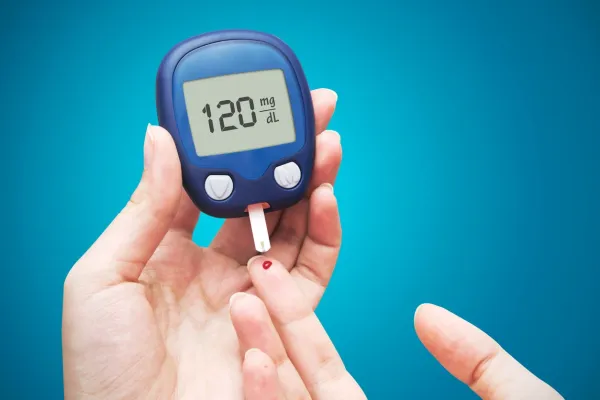
Blood sugar spikes happen when glucose levels rise rapidly after eating, especially meals rich in refined carbs or sugars. The body releases insulin to manage this surge, but frequent spikes can stress the system, lead to insulin resistance, and raise the risk of type 2 diabetes.
Blood sugar spikes may also cause fatigue, cravings, mood swings, and long-term health complications. Making mindful food choices, combining nutrients wisely, and incorporating simple lifestyle changes can help stabilise blood sugar and promote overall metabolic health. In this article, we share tips to help you reduce your blood sugar spikes.
10 Ways to reduce blood sugar spikes
1. Eat balanced meals with protein and fibre
Combining carbohydrates with protein and fibre slows down the digestion and absorption of sugars, preventing rapid spikes. For example, pairing whole grain toast with eggs or a salad with lentils can help maintain steady blood sugar levels after a meal.
2. Choose low glycemic index (GI) foods
Low-GI foods like oats, legumes, quinoa, and most vegetables cause a gradual rise in blood sugar compared to high-GI foods like white bread, pastries, or sugary snacks. Opting for these helps keep glucose levels more stable throughout the day.
3. Avoid sugary drinks and refined carbs
Sweetened beverages, juices, and processed snacks cause immediate blood sugar spikes. Replacing them with water, herbal teas, or snacks like nuts, seeds, or fruits with skin can reduce glucose fluctuations and support better insulin response.
4. Practice portion control
Even healthy foods can cause spikes if consumed in large amounts. Watching your portion sizes, especially for carbohydrates like rice, pasta, or fruit, can help manage blood sugar levels more effectively without needing drastic dietary restrictions.
5. Eat carbs last
Studies suggest that eating protein, vegetables, or healthy fats before carbohydrates during a meal can significantly lower post-meal blood sugar levels. This order slows glucose absorption and keeps levels steady for longer.
6. Stay physically active after meals
Taking a walk or engaging in light physical activity after eating helps muscles use up the circulating glucose, thereby lowering post-meal blood sugar levels. Even 10-15 minutes of walking can make a noticeable difference.
7. Include healthy fats in meals
Good fats from sources like avocados, olive oil, seeds, or nuts can slow digestion and glucose release. Including them in meals supports longer satiety and more balanced blood sugar levels.
8. Stay hydrated
Drinking enough water helps flush excess glucose from the bloodstream through urine and supports kidney function. Dehydration can cause blood sugar to concentrate and rise, so staying hydrated is key to glucose control.
9. Manage stress effectively
Stress increases cortisol levels, which can raise blood sugar even in the absence of food. Techniques like deep breathing, yoga, meditation, or even listening to music can help lower stress and reduce its impact on glucose levels.
10. Get enough quality sleep
Poor sleep or inconsistent sleep patterns disrupt hormonal balance and insulin sensitivity, making blood sugar harder to control. Aim for 7-8 hours of quality sleep per night to support healthy metabolism and glucose regulation.
